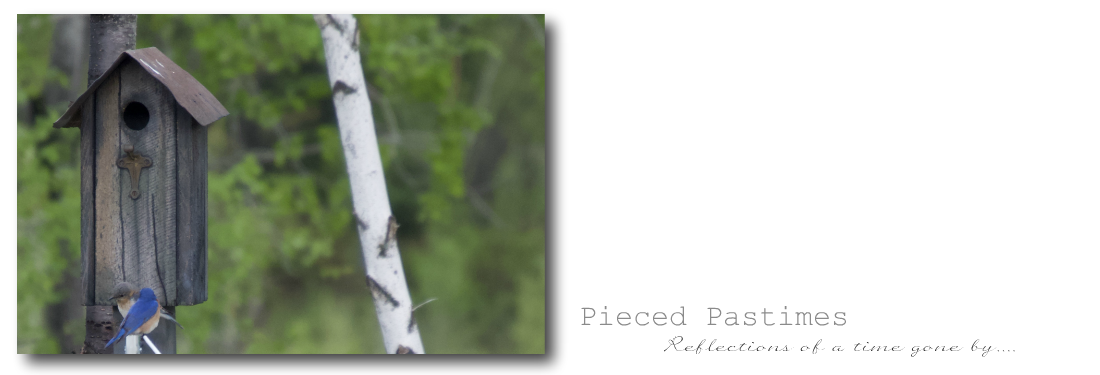During the winter months, the urge to get into the sewing room takes over. This 'Ruffled Pillow' came about on a cold and blustery day here in New Hampshire.
Supply List:
- 12 x 16 Pillow Form
- approx 1 1/2 yards fabric - I used 'Drop Cloth' fabric for my pillow
- Buttons
Cutting Instructions:
- Cut one 13" X 17" panel for the Pillow Front
- Cut two 12" X 13" panels for the Pillow Back
- Cut two 6" x 32" strips for the Ruffles*
- Cut two 1 1/2" x 17" strips for the Binding
* I used 'Drop Cloth' fabric which is fairly heavyweight and found the 32" length on the ruffle worked out nicely. If you are using a lighter weight fabric, cut the two ruffles strips 6" X 51".
Sewing Instructions:
Begin by hemming the two Ruffle strips along one of the 32" long sides. Using a 3/8" Bias Press Bar, fold the fabric over the bar and press. If you don't have Press Bars, you can make your own by cutting a strip of card stock (or a manilla file folder) 3/8" wide x approx 11".
Now, fold the pressed fabric back over on itself and press again.
Stitch the hem using a 3/8" seam allowance.
Press the hems to set the seams.
Hem the short end of the ruffle strips in the same way.
There are many methods to ruffle fabric. This is a simple method that works out nicely. Mark the center of each of the two ruffle strips along the unfinished edge.
Using your machines longest stitch length (mine is a 6), sew a row of stitching using a 1/4" seam allowance. Sew another row approx 1/4" from the first line of stitching.
Hold the two back thread tails and pull the fabric to gather the ruffle to the center mark. Repeat from other end.
Measure gathered edge and evenly distribute the ruffles to a 16" length.
Using a water soluble marker (or chalk), mark a line up 5 1/2" from the 17" edge. Mark another line 2 1/2" from that line.
Pin one of your gathered ruffles to the first marked line, starting and ending 5/8" away from Pillow Front edges.Add the second ruffle to the next marked line in the same manner.
Decide on your button placement and stitch buttons in place.
For the Pillow Back, hem one 13" edge on each of the panels.
With right sides up, place the two Pillow Back panels to a measurement of 13"X 17". The finished hem edges should overlap to create an envelope style back.
Pin the ruffles away from the edges to prevent them from getting accidentally sewn into the seams.
Pin the Pillow Front to the Pillow Backs.
Stitch together using a 1/2" seam allowance. Stitch a zigzag stitch to the inner seam to prevent fraying.
Turn Pillow Cover right side out and place pillow form inside. My favorite thing about the envelope style back is the ease of replacing the cover.
Now, sit back and relax with your new 'Ruffled Pillow'.
I hope that you find this tutorial helpful and I would love to know if it inspires you to make one of your own.
Linking up to the following parties:

























































_thumb%5B1%5D.png)

